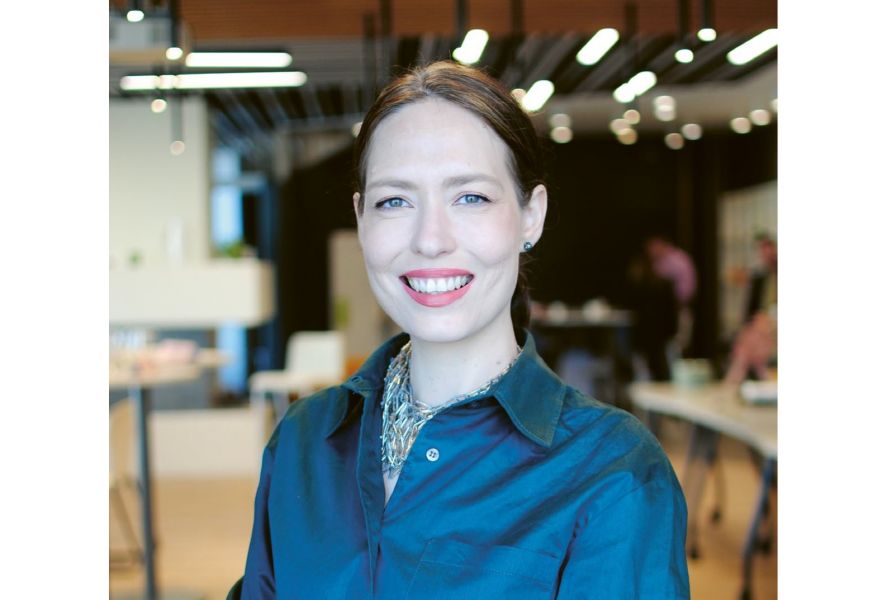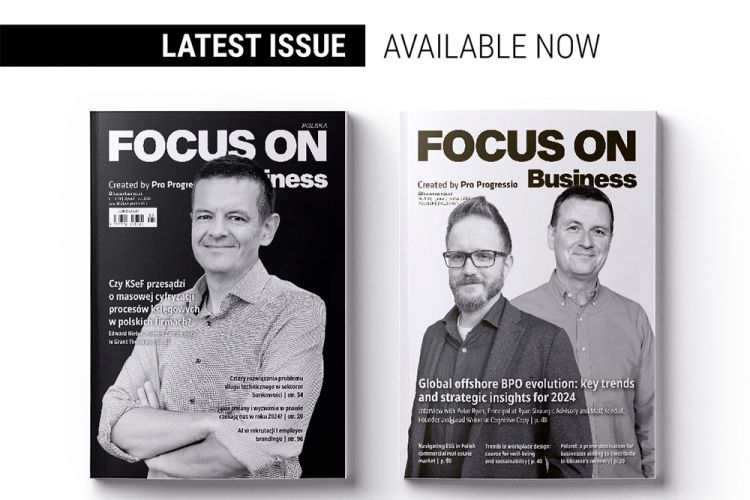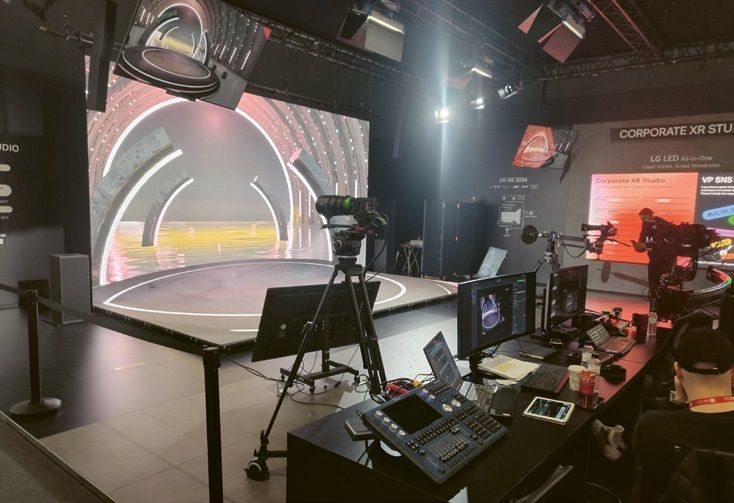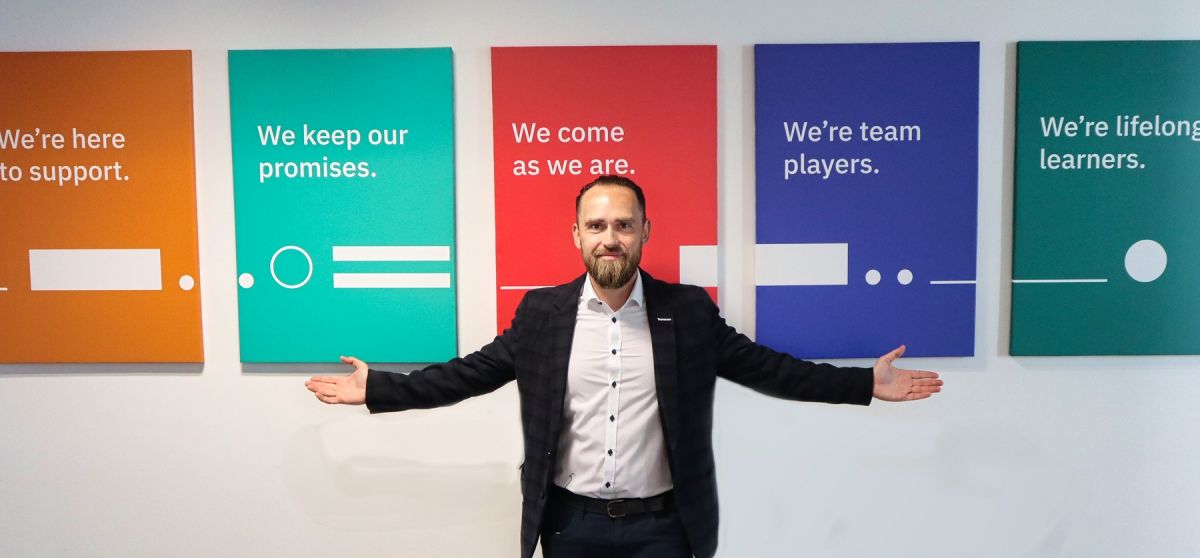Trends in workplace design: course for well-being and sustainability

In a conversation with Natalia Pokorska, Sales Director at Steelcase in Poland, we analyze the dynamic changes in the concept of the workplace, spurred, among others, by the growing significance of remote and hybrid work. We also explore the vital importance of adapting designs to the evolving needs of users, leveraging technologically advanced solutions, and incorporating sustainable design practices.
FOCUS ON Business: How do you assess the evolution of the workplace concept that is taking place with the growing importance of remote and hybrid work? How does this affect workplace design?
Natalia Pokorska, Steelcase: The concept of the workplace has evolved significantly over the years. Initially, it focused on physical locations where employees gathered to perform tasks. With advances in technology and a recent Pandemic, remote work options became possible, allowing people to work from different locations. This evolution has led to a more flexible approach, emphasizing results rather than physical presence. Additionally, the integration of digital tools and collaboration platforms has changed the way people communicate and collaborate, making remote work more efficient. Moreover, the emphasis on employee well-being and work-life balance has become an important aspect of the modern workplace. The concept of an ideal workplace continues to adapt to the changing needs and expectations of both employers and employees.
What are the key current trends related to workplace design and layout?
There are several key trends we can identify that are shaping today’s workplace design. One of the first is the importance of flexible and hybrid spaces. Workplaces should adapt to the different styles and unique tasks of each employee.
Hybrid spaces, therefore, combine open spaces with private corners that allow employees to choose best suited zones to their daily needs. Hybrid spaces also mean the successful integration of remote work.
Remote work is becoming more common, and workplaces are being designed to seamlessly integrate remote and office collaboration. This includes advanced video conferencing systems that bridge the gap between in-person and virtual interactions. Most companies already offer professional support for home office setups, including the provision of ergonomic furniture, technical support, and employee subsidies.
Hybrid work also means working in the office, and when we do return to the office, we want to feel comfortable. As a result, there is a growing emphasis on creating work environments that promote employee well-being and satisfaction with the space. This includes incorporating natural light, elements of greenery, ergonomic furniture, and spaces for relaxation. Additionally, a corporate sustainability plan focused on environmentally friendly materials and energy-efficient solutions is becoming an important factor for people when selecting a future employer. Activity- -Based Working (ABW) planning is also an extremely important issue.
Activity-Based Working (ABW) is an approach to office design and work culture that emphasizes flexibility and choice. The idea is to provide employees with a variety of spaces and settings suited to a diverse type of activities and work styles. Sample zones in an office can be designed to accommodate teamwork, individual work, and include focus areas as well as social spaces.
Of course, a successful workplace design cannot exist without a key element called DEI (Diversity, Equity and Inclusion). Workplaces are increasingly focusing on creating inclusive environments that embrace and support the diversity of the workforce.
D for Diversity refers to differences such as ethnicity, gender, age, sexual orientation, disability, cultural background, or work experience. The goal of maintaining diversity is to provide multiple perspectives and experiences in the workplace.
E for Equity – helps eliminate inequalities to create fair conditions for all members of the organization.
I for Inclusion – involves actively involving employees by considering their point of view and promoting feelings of acceptance.
In summary, the above trends reflect the evolving nature of work and the need for work environments to be flexible, inclusive, and supportive towards employee well-being and productivity.
What are some examples of innovative technology solutions developed by Steelcase to improve workplaces and how do they align with evolving user needs?
Steelcase is well known for its innovative solutions in furniture manufacturing and office space design. We have proven this once again with our latest design for an office task chair – KarmanTM. KarmanTM responds naturally to the movement of the body, providing industry-leading comfort, ergonomics, and sustainable elements.
Steelcase realizes that supporting postures, not restricting them, is key to successful working or learning. Many of our customers are not only corporations, but also educational institutions that want to improve the learning experiences in their facilities. That’s how the Node chair was born – a mobile seating solution designed for active learning and collaboration. It features a swivel table that provides a personal work surface and supports technology integration, allowing users to comfortably use electronic devices. The base of the Node chairs is also an interesting solution for storing personal items that usually block the aisles. The design is thus ideally suited to the changing needs of education facilities and project related work.
When I say innovative technology, I also mean adapting office solutions to work with modern technology. Nowadays, work in the office does not only take place at assigned workstations. That’s why Steelcase applied this trend in creating the B-Free collection. This collection includes modular furniture equipped with built-in electrical outlets and technology support, thus satisfying the need for flexible, shared spaces where employees can easily plug in their devices and work independently or with a team.
Sustainability is an important issue for many organizations today. How does Steelcase implement environmentally friendly practices in its design and manufacturing processes?
Steelcase is committed to sustainability and implements environmentally friendly practices in its design and manufacturing processes. Steelcase was one of the first in the industry to achieve Carbon Neutrality in 2020 – and is on track to reduce 50% of absolute carbon emissions by 2030. This ambitious goal has been verified by the Science Based Targets initiative, a leading organization that supports companies in the process of reducing emissions and preventing the effects of climate change. Sustainability is thus not only a definition of business, but also an integral part of our corporate identity. The Carbon Neutrality policy translates into our manufacturing processes and the way we want to help companies make better choices when purchasing solutions for new offices. Hence the availability of Carbon Neutral certification for all chairs designed and manufactured by Steelcase.
Running an environmentally friendly business requires a lot of passion, dedication, and attention to detail. We have an amazing team that carefully selects materials for our products, preferring those with low environmental impact. They specifically consider factors such as recyclability, renewable content, and the use of non-toxic materials.
Steelcase also focuses on recycling and upcycling materials to reduce waste. We reuse materials not only from our own products, but from partner brands as well, fully utilizing waste and giving materials a second life in the manufacturing process. We are also investing in energy-efficient technologies and processes at all our manufacturing facilities around the world. By reducing energy consumption, we can effectively minimize our environmental impact and contribute to sustainability efforts. In addition, we are implementing measures to minimize the use of water in our manufacturing processes, helping to protect this valuable natural resource.
Thanks to the above efforts, our products are often certified by recognized environmental organizations such as Cradle to Cradle, GREENGUARD and the Forest Stewardship Council (FSC). These certifications ensure that products meet strict environmental and sustainability standards.
It is important to emphasize that while we design and manufacture with the environment in mind, we are very keen that our global supply partners are equally committed to environmental responsibility and adhere to sustainable business practices.
Thank you for the interview.
This article comes from magazine:
FOCUS ON Business #14 January-February (1/2024)
 Check the issue
Check the issue








